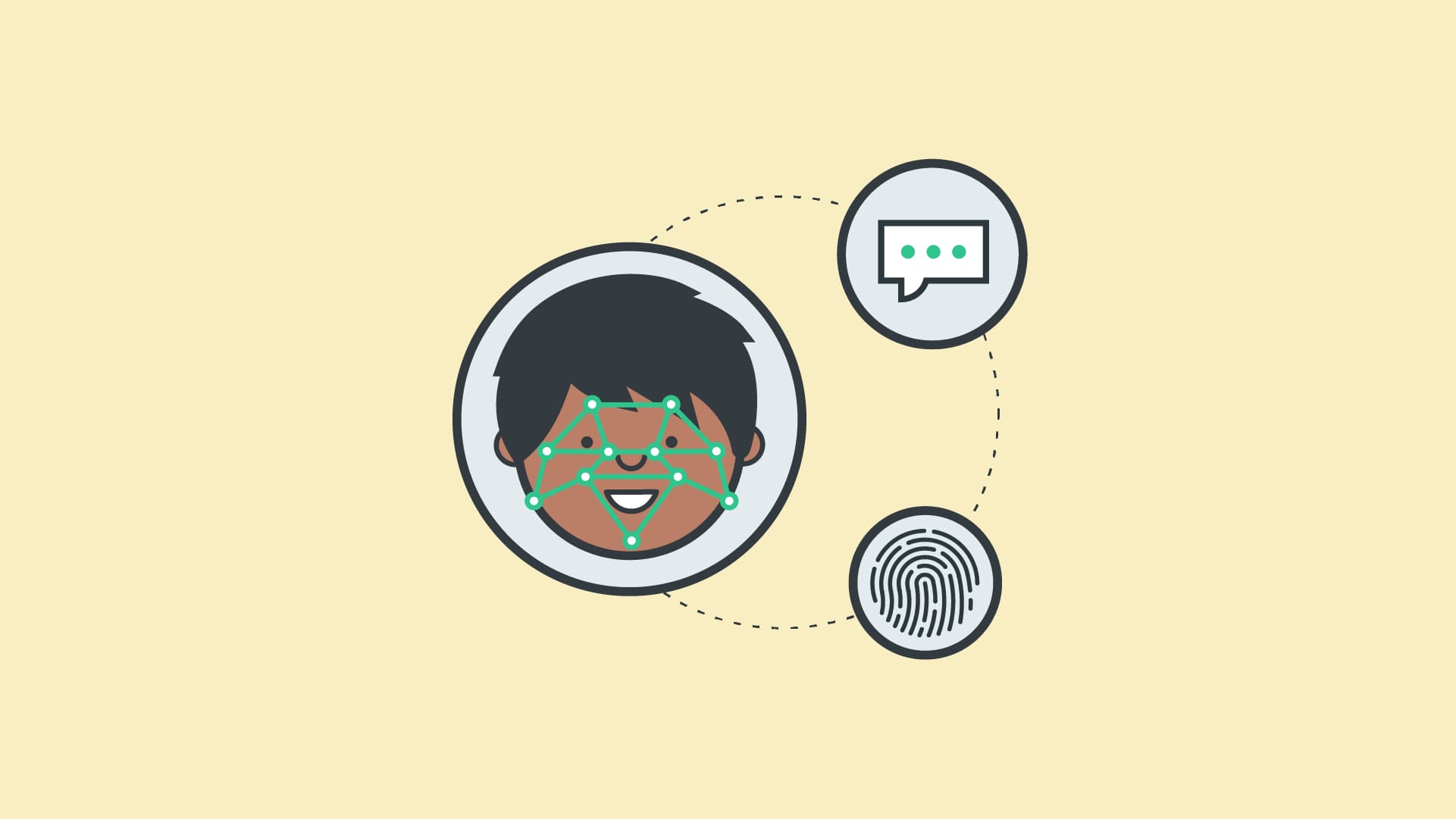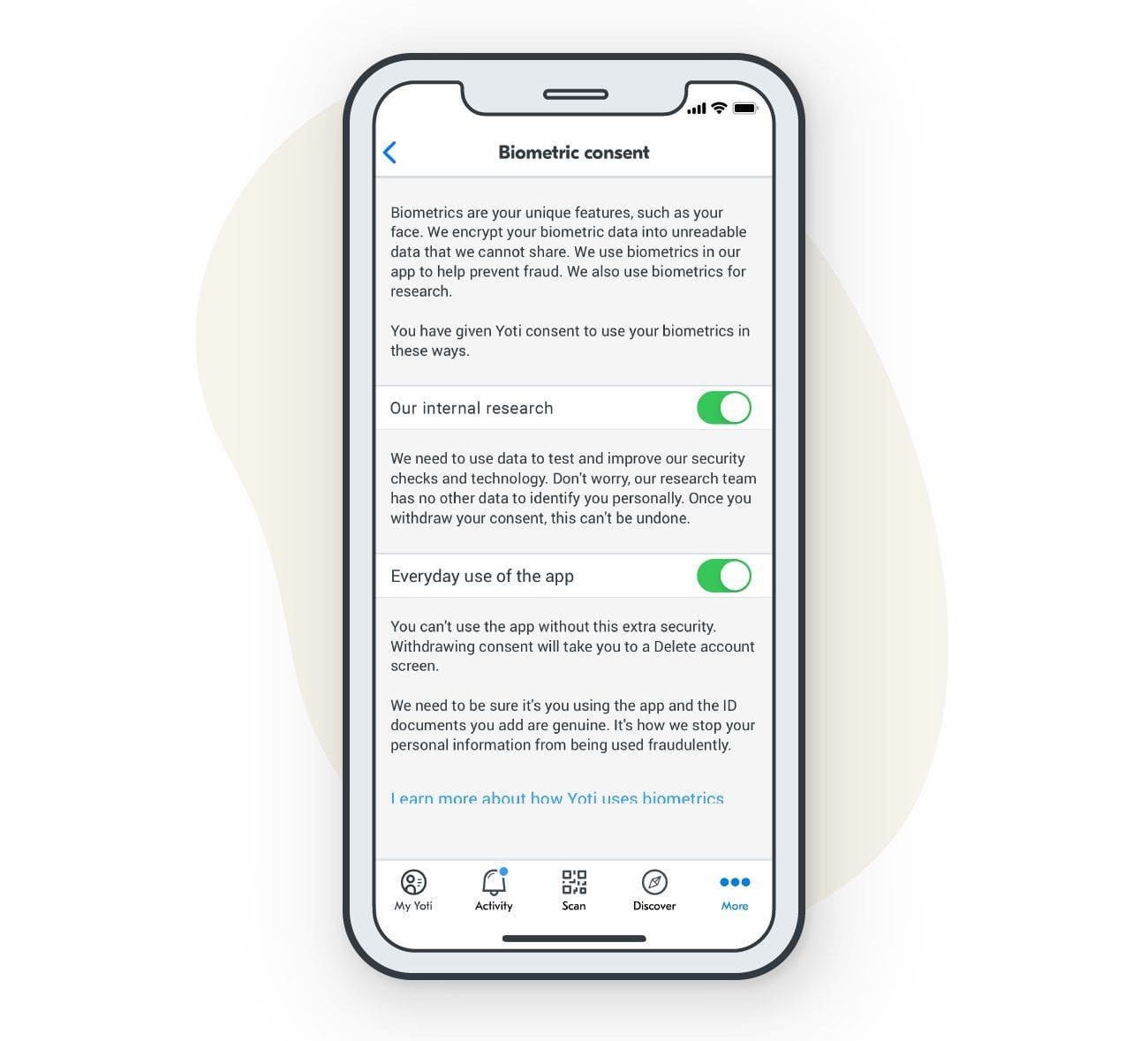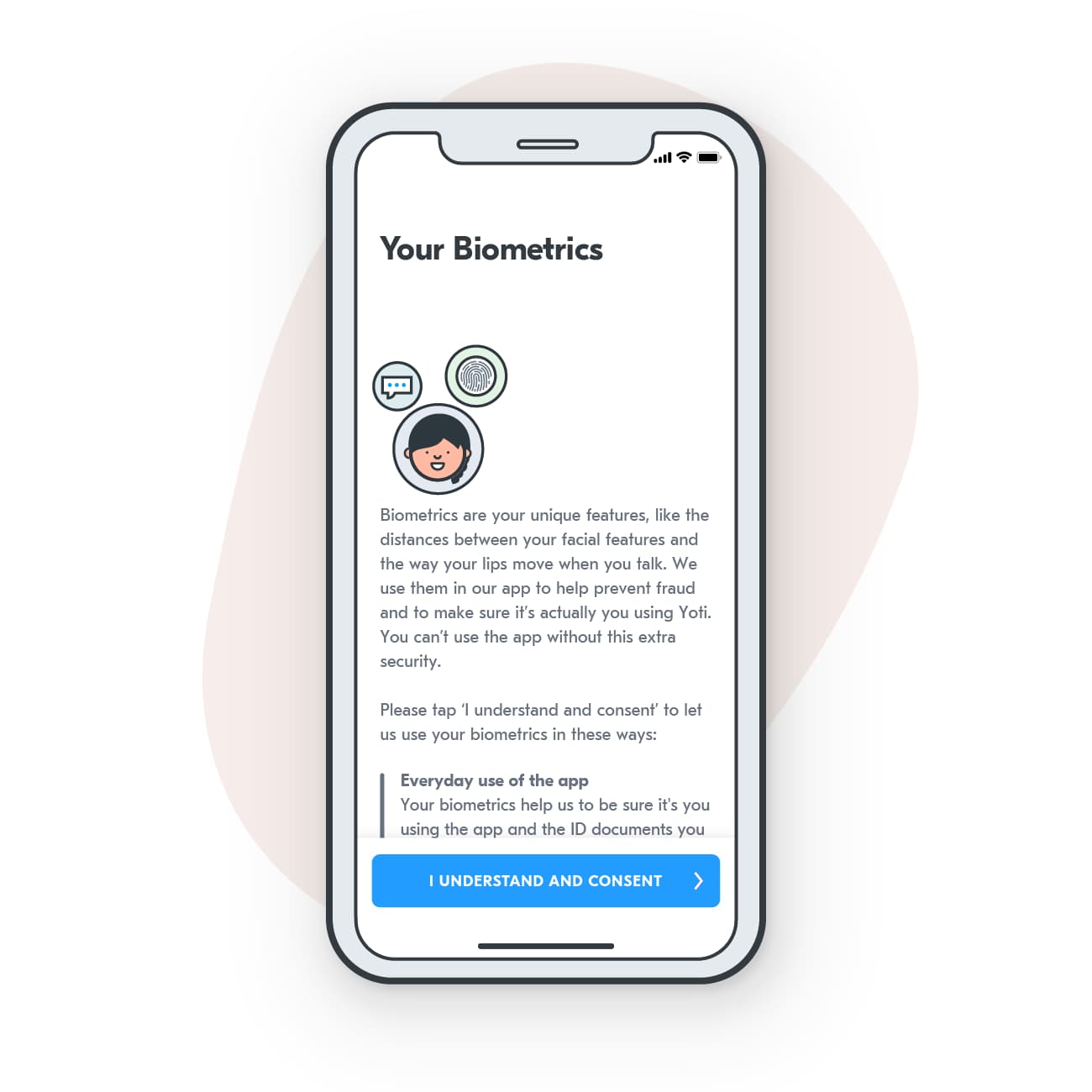
As our everyday lives become more digital, traditional IDs lag behind. They reveal more information than necessary, don’t make it easy to prove your identity remotely, and are easily lost and expensive to replace.
That’s why we built Yoti app – to give everyone access to a digital ID built for a digital world. It makes the everyday easier and enables you to share less data and securely store your personal details in a privacy-centric way.
We use biometric technology because it’s currently the most secure way of proving that you are who you say you are and that your ID documents belongs to you.
Today, our Data Protection Officer Emma Butler explains everything you need to know about how we use biometric technology at Yoti.
Why biometrics?
To be a trusted identity platform, we have to make sure that individuals can’t create fake identities. We have to take steps to check it’s really you and to make sure you can’t upload someone else’s document. This is where the biometrics comes in: fraud prevention, security, safety. If we explained in minute detail exactly how everything works, people would be able to game the system, get round our checks and create fake identities. So we are as transparent as possible without compromising anyone’s security.
So what are the biometrics then?
This is where it gets complicated.
Biometrics is defined in different laws in different countries, but not always in the same way. Also, regardless of what the law says, people have their own ideas about what it is.
Most experts agree that biometrics is the measurement and analysis of your unique physical characteristics and behaviour. Some identify you, some authenticate you, some just distinguish person A from person B, and some estimate things about you, like your age, gender or mood.
People typically think about biometrics as being your face, your fingerprint, your voice, the way you walk, the way you use your phone and so on.
Legally, the common factor in most laws is that you are identified (it is determined who you are) or authenticated (you are who you say you are) through your unique physical characteristics or behaviour.
Biometrics at Yoti
Not all Yoti uses of your ‘biometric’ data identify or authenticate you. However, to make things easier to understand for our users, we have called all the physical characteristics and behaviour data ‘biometrics’. After all, we’re an app. A mobile phone screen is all the space we have. We can’t get into the legal and technical weeds on a small screen, and user testing has shown that users don’t read screens containing lots of information. So we simplify where we can, we provide the right information at the right time, and we always direct you to longer, more detailed information in our privacy notice for those who want it. We also have FAQs and a friendly, responsive user support team.
Are you real?
When you set up your account, we check you’re a real person. We also check you are not impersonating anyone else, such as wearing a mask or holding up a photo. We call this ‘liveness’. These security checks are known as ‘anti-spoofing’ and we work hard to stay one step ahead of the fraudsters who look for devious ways to pretend to be someone else. The anti-spoofing technologies analyse your face and your movements, but they don’t identify or authenticate you. We have two possible liveness tests. One is automated and one relies on a human being in our security centre to carry out the check. If the automated one isn’t sure enough that you are human, we ask you to do the other test.
Biometric template
During liveness we take a scan of your face and create a ‘biometric template’. This is just a string of ones and zeros. This is held securely and not shared with anyone. We check against this template when we need to check it’s really you and that it’s your ID document.
Is that your ID?
We carry out checks to make sure your document is real, is valid and belongs to you. Most of these checks are on the document. We use facial verification technology to match the face in the ID document photo to the biometric template from the liveness check. This technology authenticates you by determining if the two images are the same person. This is often called one-to-one (1:1) authentication. If the technology isn’t sure enough, a human being in our security centre checks the two images and decides.
We currently use Cognitec technology for this. Cognitec are a leading provider of this technology and approved by NIST.
Is that really you?
When you want to take certain actions in the app, we ask you to do a liveness test again or take a photo. We use the same facial verification technology and processes described above to compare your image to the biometric template to make sure it’s really you. Some organisations who use Yoti with their customers may also want this extra level of security. For example, a bank may want more security if you want to move a lot of money to another account. When they set up with Yoti they can request this and it works in exactly the same way. When you just take a photo we call this ‘selfie authentication’.
Research and development (R&D)
None of these technologies exist by magic. They all have to be researched, developed, tested and improved. This is where the R&D team come in. They develop, test and improve new and existing security-related technologies. They also have to make sure the technologies are trained on a diverse and representative dataset so that they work for everyone.
Face detection: this is a simple technology that works as described – it detects faces – human faces to be precise. The technology is trained on what a human face consists of and what it looks like in general terms. This technology is an integral part of any face-based technology to make sure that the technology only activates when a human face is presented.
Face match or facial verification: this is what we use to check it’s really you and check it’s your ID document. Essentially the technology is presented with an image which it compares to the image and biometric template attached to your account. It determines if these are the same person. If the technology isn’t sure enough, a human being in our security centre compares the two images and makes the decision.
Anti-spoofing: these technologies check you are a real human, and check you are not trying to impersonate someone else, such as by holding a photo in front of your face or wearing a mask. Our liveness step when you create an account in the app is a key part of this. As explained above, these technologies analyse a face and its movements. They don’t identify you or authenticate you. We can’t provide too much detail about exactly how these technologies work or people would be able to devise ways to get round the checks.
Age estimation: this technology analyses a face and estimates its age. It doesn’t identify you or authenticate you. This allows you to have an estimated age on your Yoti account so you don’t need to add an ID document to prove your age. It also means we can offer this privacy-friendly technology to other organisations who need to check their customers’ age.
Usually organisations who need to check your age ask you for lots of personal information or credit card details. They also sometimes check that information against third parties, such as credit reference agencies. Our technology means organisations can offer anonymous age checks. This is particularly important to people where they need to prove their age to access age-restricted or age-specific content online. Or where they want to buy age-restricted goods without having to hand over an ID document. It also helps retail staff who have to check ID documents and may not have the training to spot fakes, or who may receive abuse for checking in the first place.
How do I opt out of R&D?
If you don’t want your data used in our R&D you can opt out in the app settings. It’s that simple.
Opting out means no further data is sent to R&D and existing data that R&D had available to them is also deleted. If you decide to delete your account, this also deletes the R&D data.
It’s important to know that if your data has already been used in a project to train software, it is impossible to undo that activity.

Developing biometrics the right way
To make sure we develop our biometric technology in the right way, we have internal governance measures such as an internal Ethics and Trust Committee and are advised by our Guardian Council of expert professionals in data privacy, human rights and last mile tech.
The accuracy and bias mitigation of our age estimation algorithm has been reviewed by Dr Alison Gardner from Keele University and IEE and our approach has been shared with regulators and civil society bodies in roundtable sessions. You can find its current accuracy levels in our regularly-updated Yoti Age Scan white paper.
Further reading
We think this poster on facial recognition by the Future of Privacy Forum is brilliant for an overview on biometric technology. You can also find some great materials on the Biometrics Institute and Gemalto.

